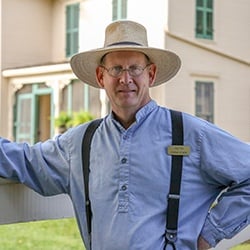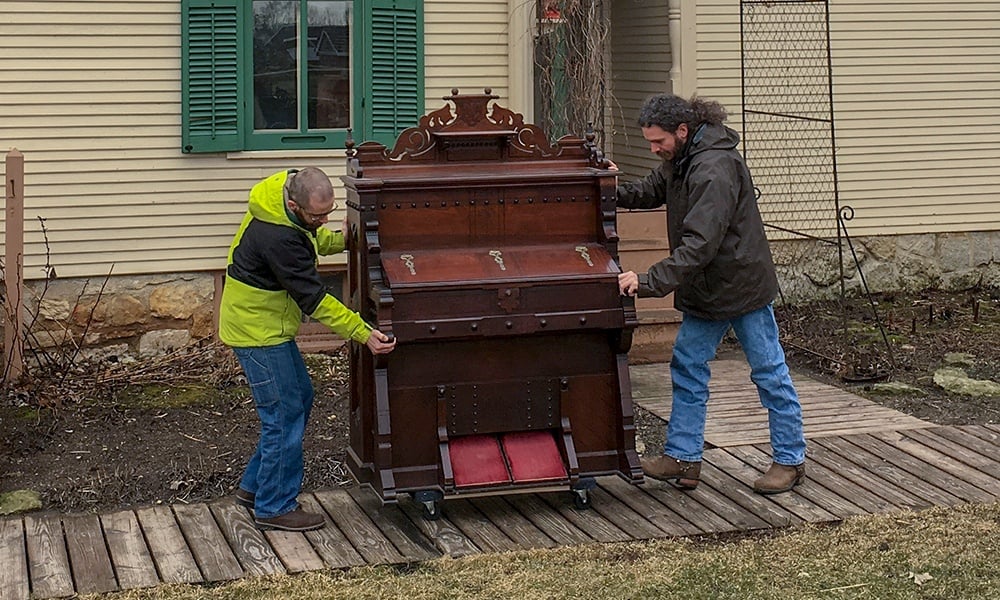
Once we had the wood-burning stove in the works, our next project was to restore our pump organ at the 1880s farmhouse museum at Kline Creek Farm in West Chicago. I knew it had major problems and I had money in the budget to restore it, but one day it stopped playing so it moved up higher on our priority list.
In 1987, a Lombard family gave their parlor organ to the Forest Preserve District for the restoration of the Kline Creek Farm farmhouse. The organ must mean a lot to the family because they gave it on the condition that if theForest Preserve District every disposed of it, the family would have the right of first refusal. They’ll be pleased to know the organ has found a new home and is treasured here at Kline Creek Farm.
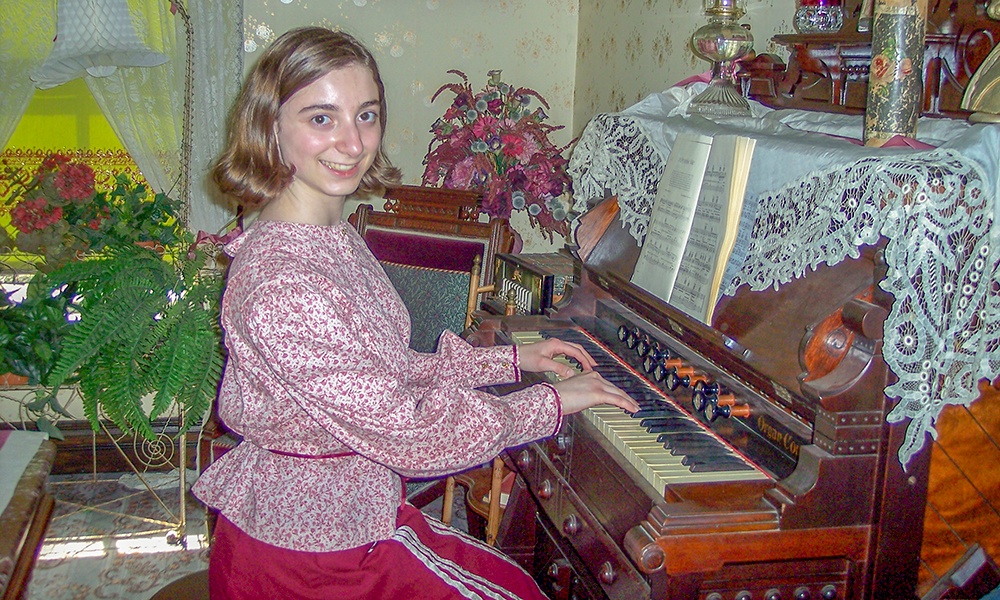
A volunteer plays the organ as the farmhouse would be decked out for a wedding in 2008.
Our pump organ was built by the Smith American company in 1864 at the end of the Civil War. It was an early version of what they call the cottage-style pump organ. Its mechanical parts are much like the older style melodeons made during the Civil War but features like the “Tremolo” function more like organs made in the 1880s. It must have been a top-of-the-line model, judging from the way it was made and its innovative features like a sub-bass and rubber components.
Pump organs are very complicated instruments. They contain of all of the parts of a large church pipe organ packed into a smaller version that fits in your home. Our organ has four sets of reeds all packed into the case. To give you options, the stops let you add sounds, link keys and add vibration.
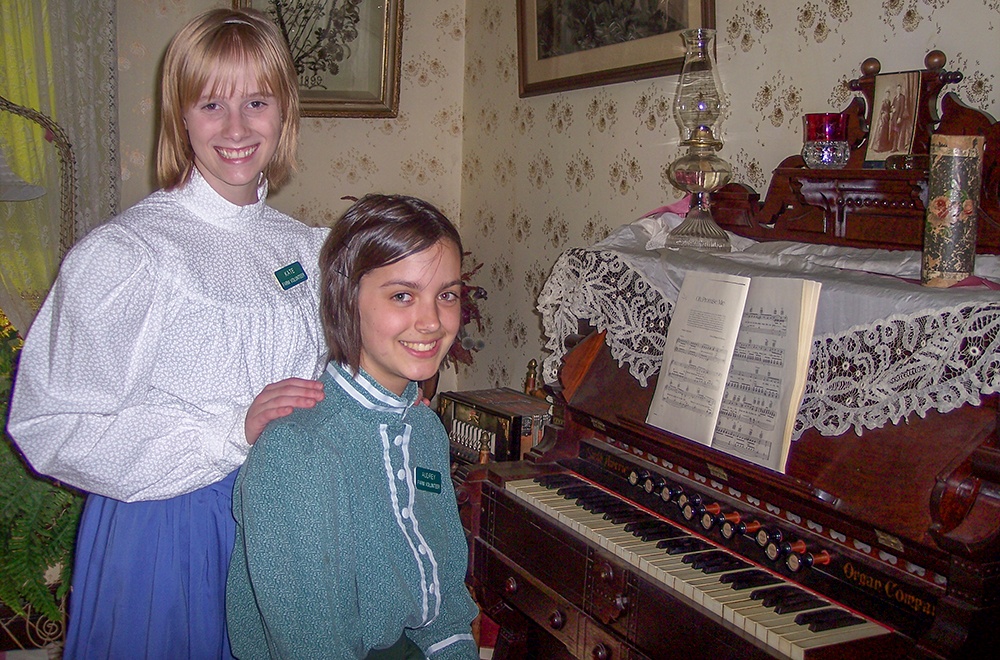
Two volunteers by the pump organ as it is decked out for a wedding in 2008.
First, to make sound you must fill the organ’s bellows by pumping the foot pedals. The keys operate reeds, so when you press the key, air from the bellows flows up the reed and makes a sound. You can change the sound by using the stops, which are pull knobs that add extra features. The expression “pull out all the stops” refers to using all the feathers of an organ at the same time. There are two full sets of reeds and two partial sets that the stops can operate along with the tremolo and the octave coupler. OK, this is getting complicated. Just know that the organ has peddles, keys and knobs and if you know how to use them, you can make some really cool music.
Many of the volunteer tour guides love to play the organ as part of the house tour. It adds sound to the farmhouse tour and gives visitors a feeling of how a farm family would entertain themselves in the 1890s. When the organ stopped working, a few of the volunteers were concerned that it may not be repaired. I knew that many of the features were not working and it was on our list for restoration. However, finding a qualified restorer and collecting bids would take some time, so I opened up the organ to see if I could get it working.
I found that the leather on the bellows relief valve had split and the bellows could no longer hold air. I was able to rebuild the relief valve and glued it in place with hide glue. Hide glue is wonderful for temporary repairs because it can be easily removed. I did not want to make it harder to restore. The organ was back in operation until it could be fully repaired.
We found Short Mountain Music Works in Woodbury, Tenn., to do the work within our budget. We made arrangements and off the organ went for repair. It took all summer to restore. They replaced some missing woodwork, refinished the cabinet and rebuilt the mechanical components. They completely rebuilt the bellows and repaired the tremolo. There were two features that they could not repair within our budget, but they are minor and only a musician from the 1890s would notice they are missing.
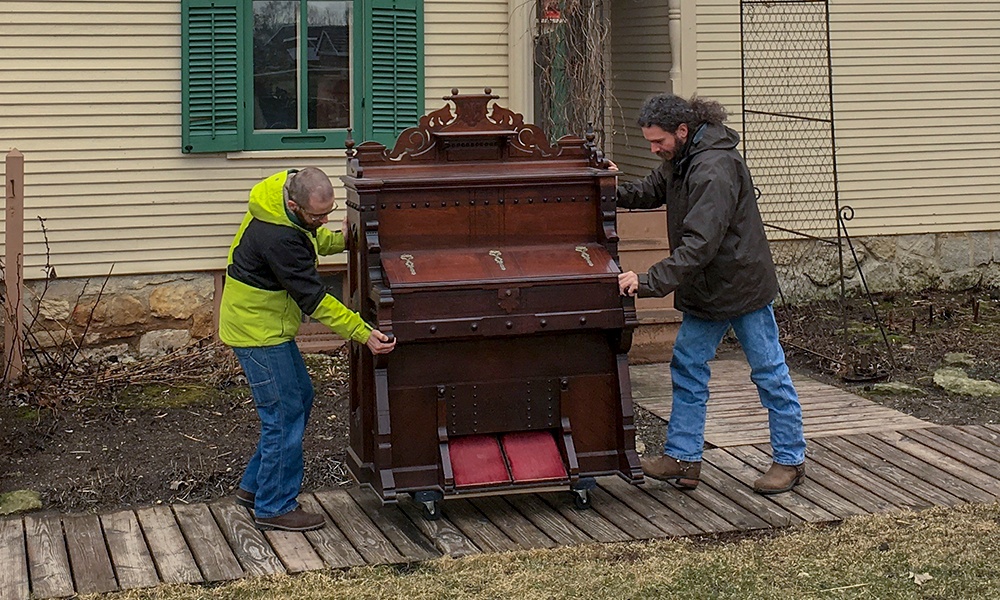
Workers from Short Mountain Music Works pick up the pump organ to transport it to their workshop in Woodbury, Tenn., for repairs and restoration.
The organ came back to us in late October 2018 and is once again in the parlor of the Kline Creek farmhouse. Visitors can see the organ on a house tour, and if the tour guide knows how to play, you may even get a song. If I happen to be guiding your tour, I can explain how the organ works, but all I know how to play is "Mary had a Little Lamb." If you ask nicely I will even use the tremolo. Visit Kline Creek Farm Thursday through Monday from 9 a.m. to 5 p.m. Farmhouse tours start on the hour 10 a.m. – 4 p.m.
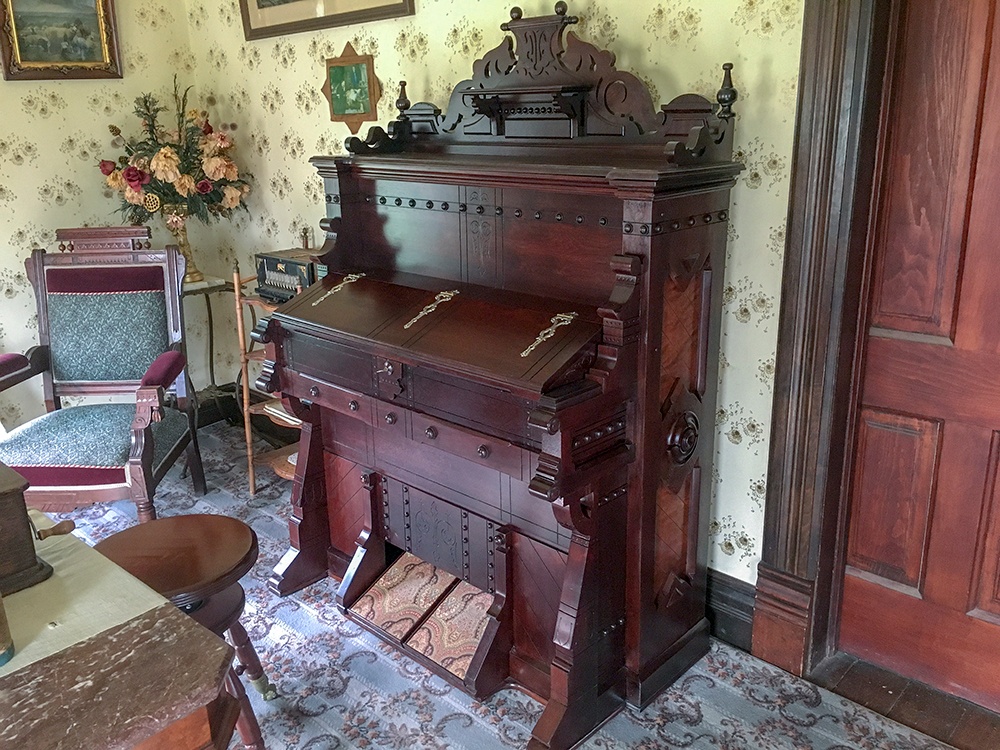
The restored organ back in the farmhouse after repairs.
Check back with our “Nature’s Storytellers” blog to learn how we reproduced the oil cloth used in the dining room and how we care for it. You can also subscribe to the blog to get it sent directly to your inbox once a week.
Other stories in the series:
Remodeling an 1880s Farmhouse Museum
Part 2: The Kitchen Wood-Burning Stove
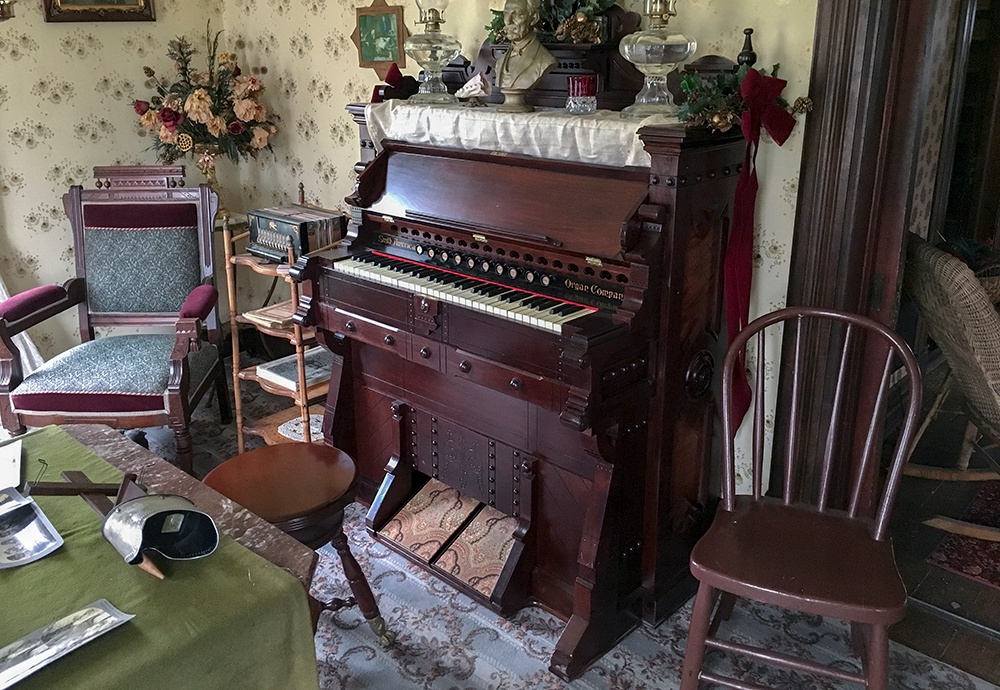
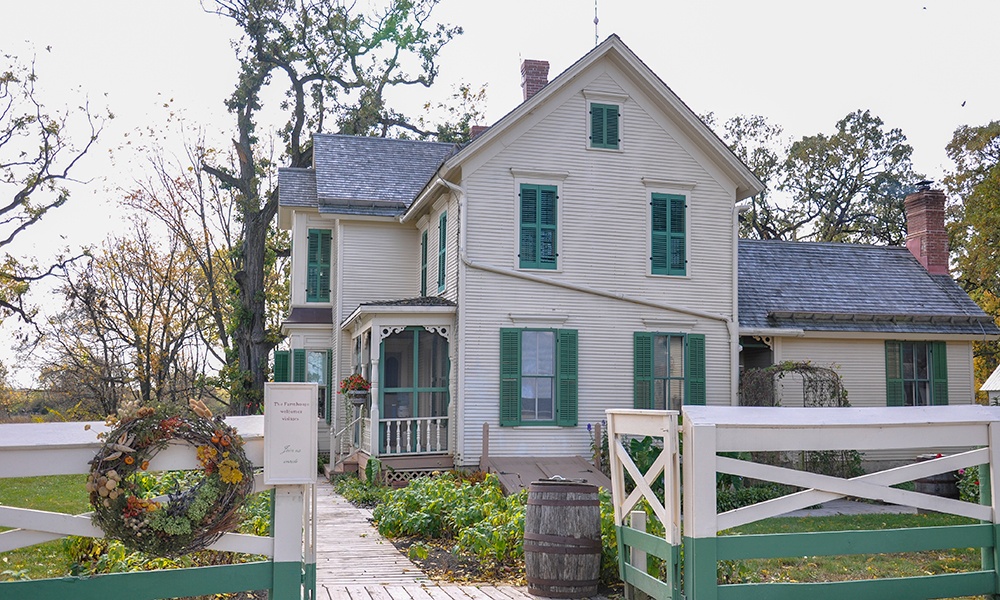
The 1880s farmhouse museum at Kline Creek Farm in West Chicago.
Keith McClow
